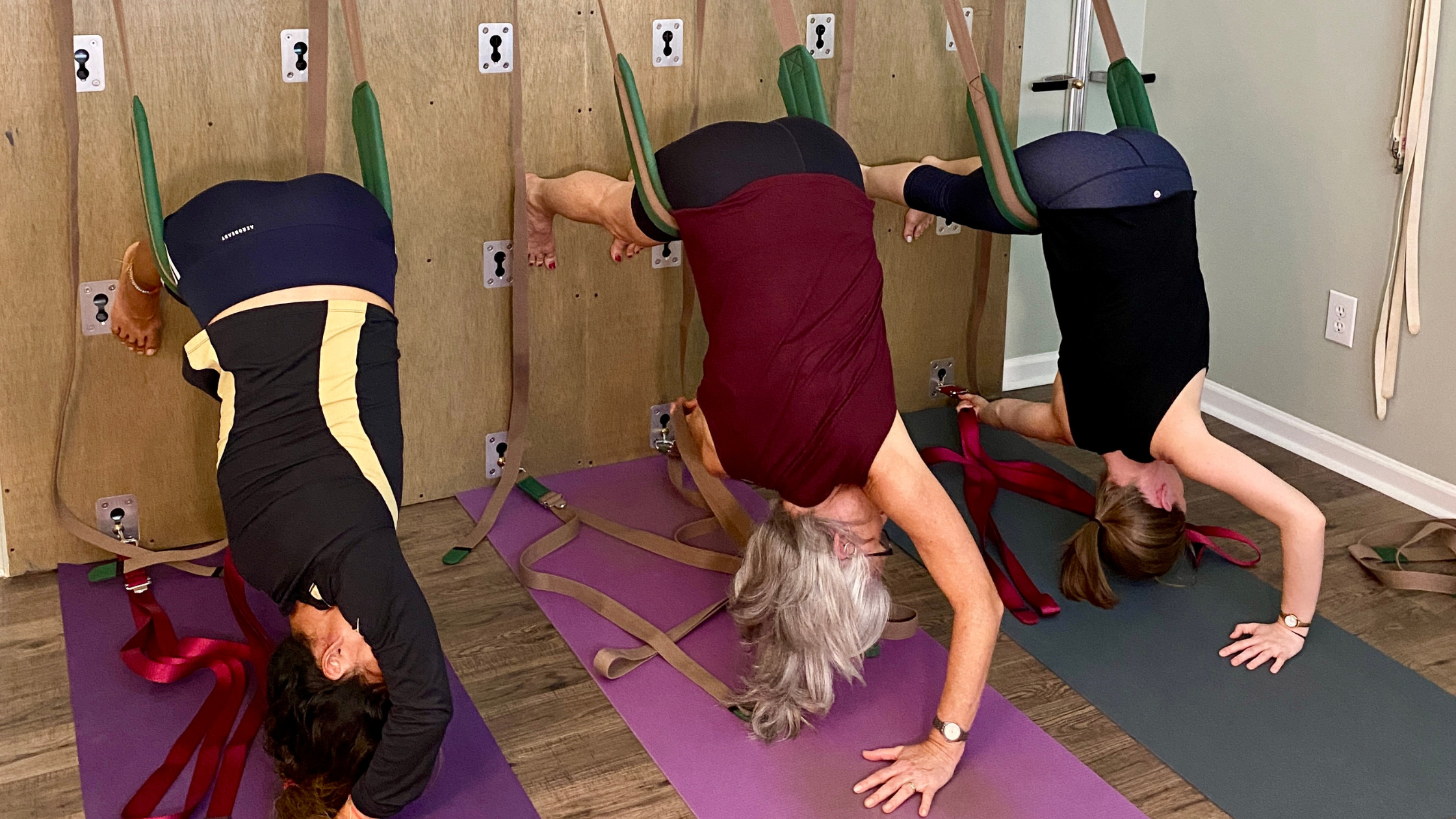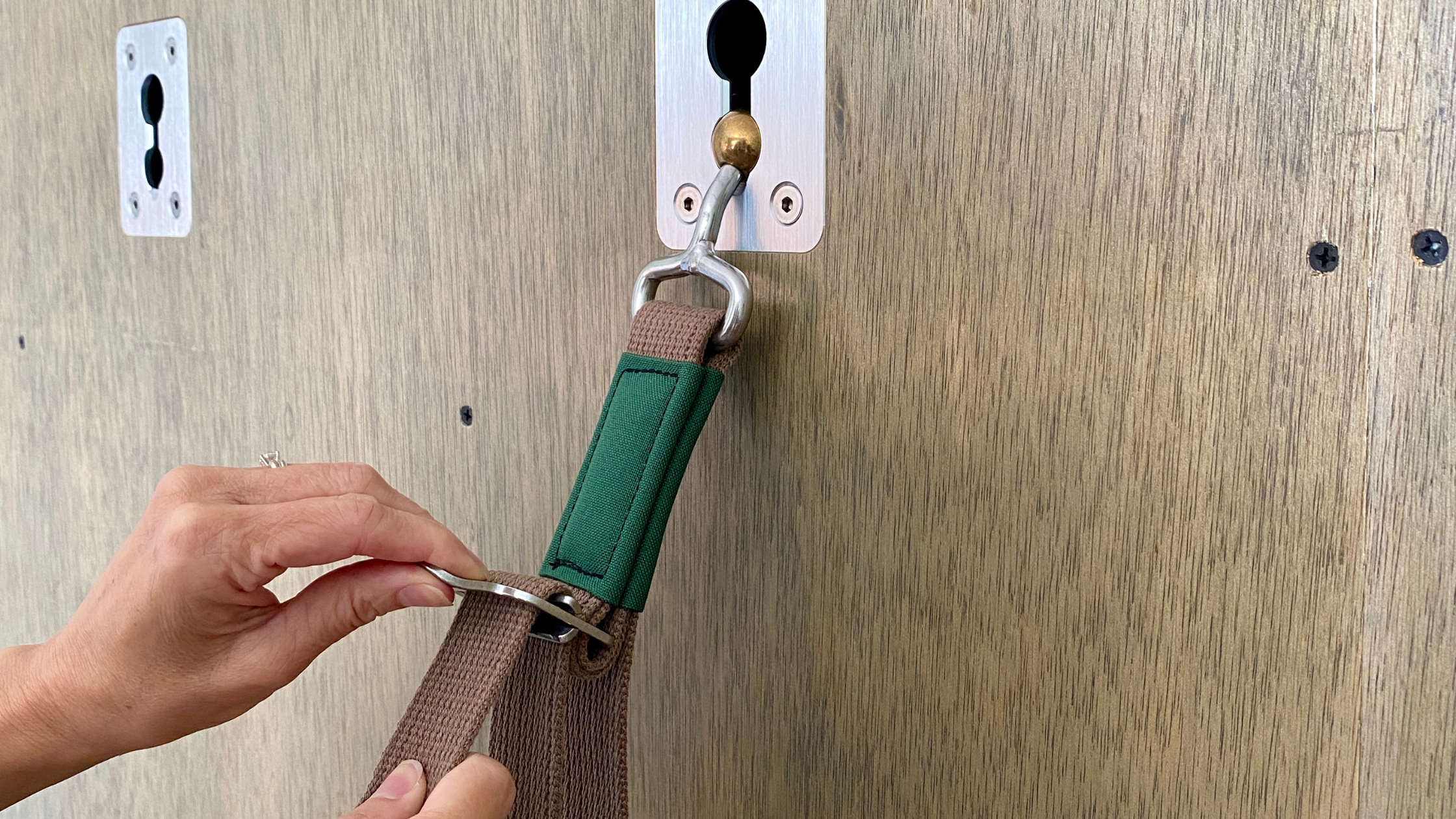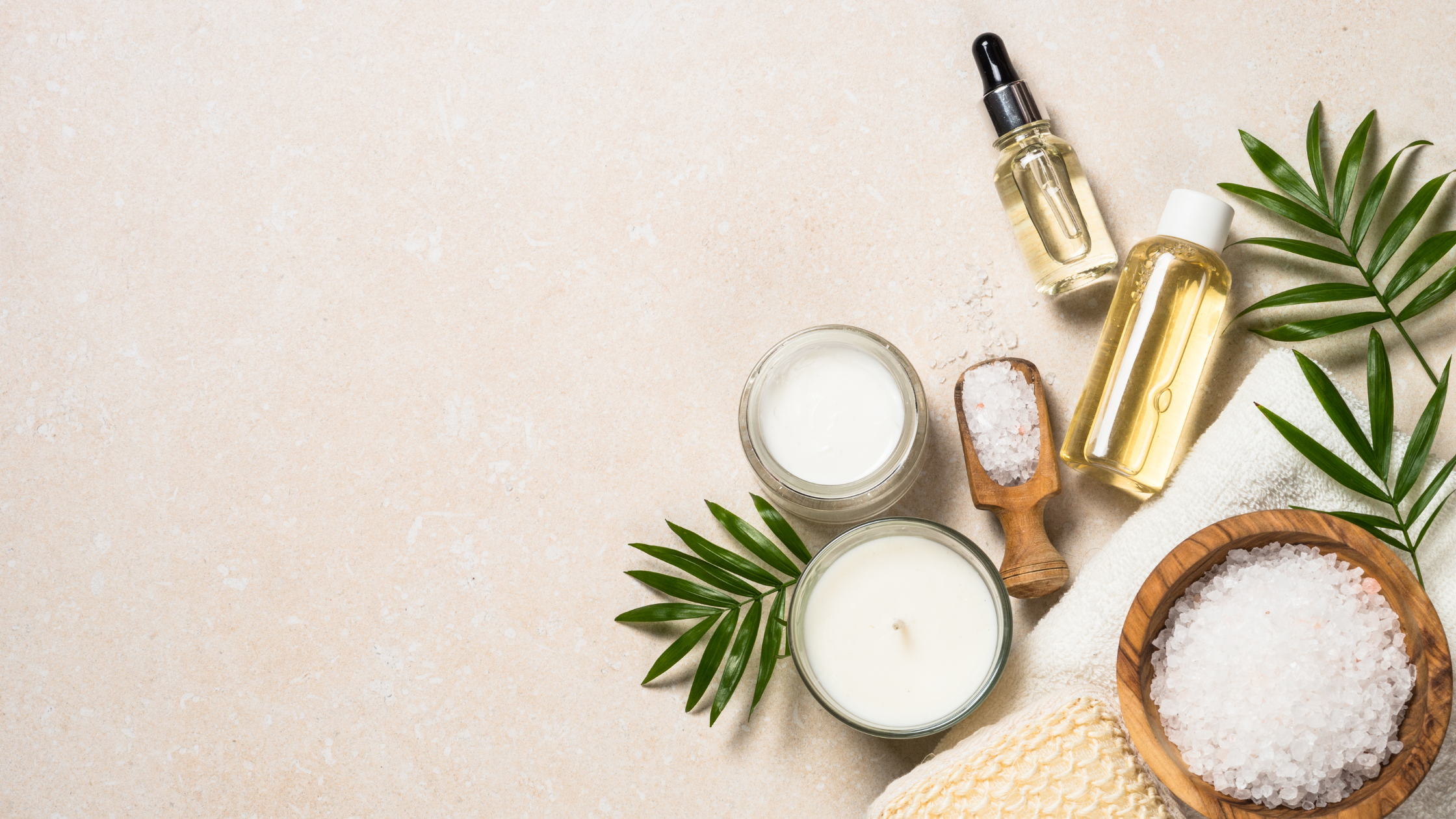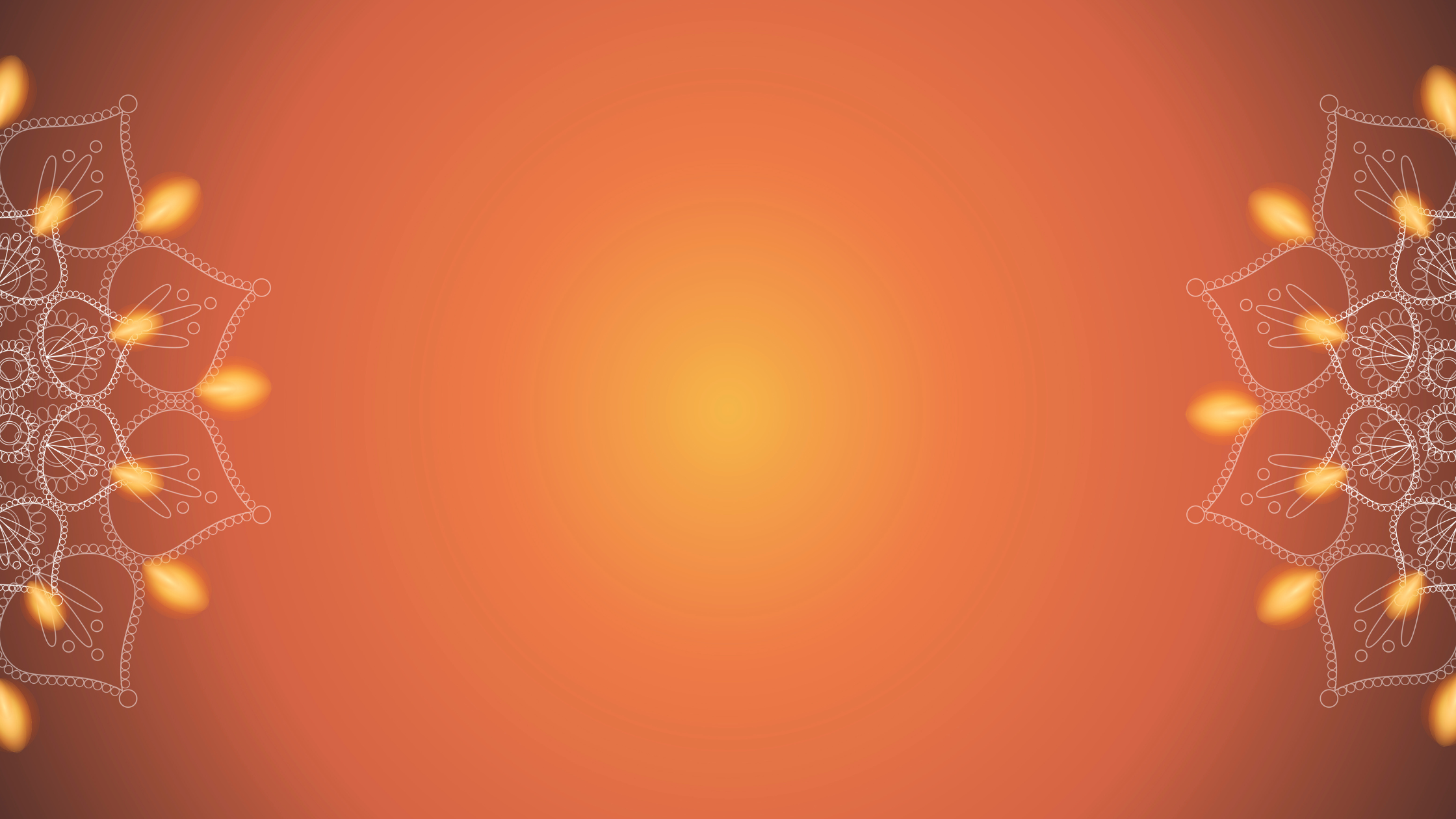
Slay Like a Goddess: Yoga Wisdom for Facing Your Battles
The familiar smell of incense rode the rhythmic waves of traditional drums and brass bells through the hall, as people streamed in front of the statues. Everywhere I looked I saw a fabric more brilliant and beautiful than the last one. The statues wore colorful handmaid flower malas, and a host of fruits, rice, flowers, and other offerings sat in front of them.
My husband and I attended his culture’s biggest holiday this past weekend. The festival honors the Goddess Durga, the divine mother and destroyer of evil.
She rides a lion and has 10 arms, each carrying a different tool to accomplish her task, which was to slay a demon who was terrorizing earth and heaven.
I’ve only got 2 arms, and I drive a Subaru, not a lion, but I definitely have my own “demons” to conquer and battles to fight. I’m sure you do too.
Durga embodies universal power and peace, and can inspire you to choose your battles wisely, armor yourself with the appropriate tools, and persevere to victory in your own battles.
Click through to discover the one thing that helps you choose your battles wisely, the key to finding the best tools to slay your demons, and how to persist through the discomfort to your personal victory.

Hidden Yoga in the Devastation
A little after 6 a.m. I heard the beep that I expected later in the day—some appliance was letting us know it lost power.
Not much later, a loud pop that sounded like a small explosion happened somewhere not too far away.
These sounds, along with the pitter patter of rain, the creaks of wind rattling the loose boards on our deck, and the frequent emergency vehicle sirens, let us know Hurricane/Post-Tropical Cyclone Helene had arrived overnight.
Usually, I relish a good power outage as an excuse to unplug, do some extra practice, enjoy a book, or declutter. As the day drew on, though, I started getting increasingly anxious, even after the rain stopped.
We still were under 6 flood, tropical storm, and tornado weather warnings and watches, and some parts of the city were under flood emergencies.
My phone battery was getting low from checking the weather for more alerts and trying to find out what was happening in Charlotte and the mountains to our west where the storm was expected to hit particularly hard.
Little did I know just how hard.
We had minimal inconvenience at our house with the power being out only for a day. It was nothing compared to what our neighbors in Western North Carolina are enduring. I can only imagine the stress on their bodies, minds, and nervous systems.
And yet, yoga is happening, even amidst the tragedies, even when people aren’t doing postures.
As my teacher, Jehangir Palkhivala, put it, “Yoga isn’t just a philosophy. Yoga just is.” It’s happening all around us whether we realize it or not.
When you look for the yoga that “just is” in a tragedy, it’s a lot easier to find hope in the heartbreak.

The Secret to How Often to Practice
One of the most common questions people ask me is some variation of, “how often should I practice?”
Whether you’re focused on postures, breathing, meditation, or practicing a change in behavior—like setting boundaries or giving feedback—how often you practice is up to you.
How often you should practice depends on many things, including but not limited to your body, your mind, your energetic state, your experience level, what you’re practicing, a variety of internal and external factors, and your desired outcome.
Click through to discover the cardinal rule to consider when determining how often to practice, a framework for creating a practice that's doable and sustainable, and a quick and easy way to boost your results.

Rest-Fueled Leadership and Worth
I had to change my practice a bit this last week or so.
Between a 3-day migraine, an action-packed long weekend in Boston, and promoting my course—Stand Strong with the Great Yoga Wall—I needed some rest.
My body was begging for time on my bolster and Great Yoga Wall this week, rather than the vigorous and active practice I’d been doing since I returned from retreat with my teacher from India.
I’m listening and giving my body what she needs to recover from the crunch time.
Don’t get me wrong—I’m not complaining at all.
I feel a deep sense of gratitude and humility for getting to travel and carry on my U.S. teacher’s legacy of sharing the amazing joy of the Great Yoga Wall.
Taking care of my body and mind HAVE to come first.
Because once you burn yourself out, it doesn’t take much to put you right back into burnout, even once you’ve recovered.
Click through to learn about the real costs of neglecting your wellness as well as fast and free self-care strategies as I chat with my friend, Sheila Botelho, on her podcast Connect with Sheila Botelho.

Letting Go to Gain More
Back to school time here in the northern hemisphere soon gives way to the signature signs of autumn. The trees start letting go of their leaves. The sun’s journey across the sky gets gradually shorter. Depending on where you live, the thermometer might be shedding a few degrees too.
Like it or not, fall teaches us about letting go. Maybe that’s one of the reasons I like it so much.
(Um, not really. Truth be told, it’s all the pumpkin stuff, colorful leaves, football, fresh crisp air, and the impending joy of the holidays that make me adore autumn.)
Autumn’s message of surrender is nature’s reminder that opportunities to let go and release arise over and over, from tough ones, like saying goodbye to a loved one, to easier times, like releasing tension in a long soft smooth exhalation.
It’s a spiritual principle I’ve been studying a long time and could do so for lifetimes.
Like any practice, the more you learn to let go—or at least resist it a little less—on your mat and in your life, the more energy you’ll have for what truly matters.

Unexpected Yoga Practices from 2000-Year-Old Giants
I took a deep breath of fresh mountain air as I stepped out of the car, and my eyes got misty as we meandered through the first of many groves of some of the largest trees on earth.
Like a little kid heading to Disneyland, I bubbled with excitement to show my handsome hubs the giant Sequoia Redwood trees of Kings Canyon and Sequoia National Parks, a place from my childhood I’d been longing to return to for years.
I couldn’t resist doing a simple practice one of my coaches gave me a couple of years ago:
Stand with your back against a tree, and let it be your spine. Feel it’s stability and strength, and lean on it. Let it hold you up, and know that support is available and all around you.
As I stood with my back against a tree trunk bigger than a small cottage or cabin, I let its energy, strength, and wisdom fill me up.
Symbols of might, majesty, and longevity, these 2000-year-old giant Sequoias inspire unexpected yoga and wellness practices that can help you live a happier, healthier life.

Walking the Wellness Talk, Even When You’re Busy
Big bowls of mangos, bananas, and avocados covered our kitchen island, and our freezer was overflowing with jars of Bengali lentils, vegetable curries, and other food I’d made ahead of visits from some of my in-laws, who have special diets that make eating food from outside almost impossible.
I’d been to the grocery store and Costco at least 1,287 times in the last few weeks, and I still missed some things.
Two days before their arrival, when my handsome hubs asked me what we were planning to eat THAT night, my face went blank.
I’d spent so much time preparing for their visit, that I’d forgotten to make sure we had something to eat before their arrival.
At that point, I had to take a few breaths and remember to walk my talk.
If you don’t fill your own tank (literally), you won’t have any energy left to do what you need to do for others and yourself, or worse, you could end up sick, unable to help anyone.
Learn about the expense of busy-ness, ideas for walking the wellness talk, and the most important thing you can do to ensure your ability to live your purpose and be there for those you love.

Recharge Yourself and Your Practice with 3 Words
As I sat on my mat in Virasana (Hero’s Pose) for my morning practice, before I even brought my palms together at my heart center, a familiar tune started singing within me.
Hmmm hmmm-hmmmmmmm hmmhmm.
I hummed it out once or twice to bring it clearly to my mind and voice.
When I recognized it as the sixth Sūrya mantra (Sun mantra)—Om Pūshne Namah (I greet and bow in thanks to the sun for nourishing me)—my whole body softened in gratitude.
Of course! This mantra’s message was exactly what I needed to remember and feel given that my mind was already spinning with to-dos and to-gets in an imaginary field of time and energy scarcity.
I kept chanting the mantra, sometimes out loud and at other times silently, as I moved through my posture practice. By the end, I was in a completely different state of mind. Calm, grateful, and full of trust.
Acknowledging the sun with the sixth Surya Mantra for doing so much of the work of growing your food is a fast and easy way to nourish your posture practice and shift into a state of abundance and contentment.
Learn how mantras are more than words, the benefits of acknowledging the gifts of the sun, and how to find gratitude, calm, contentment and relaxation.

If You Sleep and Dream, You Can Meditate
I sat with my legs crossed and concentrated really, really hard. Suddenly my body flew up into the trees.
After tree-hopping for a bit, I shot up into the dark, starry sky and looked down at the moonlit tree tops.
I soared for long stretches, all while still sitting with my legs crossed. Once in a while I rested in a tree when my mind needed a break from the flight-generating concentration.
Then, I woke up.
I smiled and enjoyed the sparkly, happy, adventurous feeling of flying in my dream.
Whether my dreams are about flying or not, when I recall them—and even now as I write about them—I notice my mind gets calmer and steadier. My breathing starts to slow down. I can start to cultivate the feeling of the dream again.
Thinking about dream-filled or dreamless sleep is one way to focus the mind on one thing, and when you concentrate on one thing over time, before you know it, you’re meditating.
Explore yoga’s take on meditation, sleep, and dreams…

How to Meditate Without Making the Mind Blank
I sat in my Granny’s backyard, looking up at a neighbor’s towering trees that were as close to a skyscraper as you'd ever see in my hometown. I watched the gentle breeze rustle the leaves in the trees and started to day dream, as I tended to do at some point during our regular family gatherings.
I closed my teenaged eyes with a smile and imagined the feeling of my new boyfriend holding my hand. I replayed the scene over and over in my head and imagined that feeling again and again, until Granny was serving strawberry shortcake or homemade ice cream or maybe even both. Who knows?
I can’t remember what we had for dessert, but looking back, I recognize that this was one of my first experiences meditating.
On the surface, you might think that I was just a starry-eyed teenager buzzing with hormones and daydreaming about new love. And you’d be right.
BUT…
As I continue to learn about meditation through my study of the ancient texts and my own practice, and as I look back to my earliest meditative experiences, I realized there was one thing that made this particular daydream different than others.
I wasn’t just thinking about the boy.
I wasn’t just remembering the scene.
I was concentrating and using my mind to re-experience the feeling I had when he held my hand.
I was altering my state of consciousness and recreating the excitement I felt—from the butterflies in my stomach to the sensation of his hand in mine to the electricity that shot through me.
If you’re wondering, “How is this meditation, Tami?” you might be thinking of the misconception that meditation is about making the mind blank. Despite more and more research studies showing the benefits of meditation, I still come across people who dismiss it or think they can’t do it because of this misconception.

How to Avoid Overstretching with the Great Yoga Wall
With or without the Great Yoga Wall, we’ve all been there.
I’m talking about finding ourselves in the City of Regret after having pushed ourselves too hard in a posture practice.
Every time I teach a Great Yoga Wall course or intensive, at least one of the participants mentions to me how sore they are.
Usually, it’s harmless, normal delayed onset muscle soreness that comes from working the muscles and opening up the body in different ways.
Sometimes, though, they’ve overdone it.
Like any force, the power of your practice depends on how you wield it, and that is especially true when you practice with the Great Yoga Wall.
Here’s what NOT to do and what to do instead.

How to Determine Your Great Yoga Wall Belt Lengths
You’re in a Great Yoga Wall class, and the instructor says something like,
“Lengthen the wall belt so it comes just below your knee.”
“Make the belt as long as your arm.”
“Shorten the belt so it comes to your hips.”
When you try to go into the pose, the belt slips off because it’s too long. Or maybe you can’t even get in the pose because the belt is too short. By the time you figure out the best length for your body, the instructor has moved on to the next pose.
Or maybe you’re practicing by yourself at home and trying to go by these cues you heard in class, but none of them work. Frustrated, you give up and drop into Savasana.
Over nearly two decades of teaching more than 4,000 bright, enthusiastic, magnificent people who want to feel the deep stretches, profound relief, and giggly delight that the Great Yoga Wall gives, I’ve found that these kinds of guidelines rarely work.
Nothing is a substitute for your own practice. Figuring out your wall belt length is a 5-step process.

From Chaotic to Calm: Planting Roots to Steady Your Posture, Body, and Mind
You sit on your mat with your eyes closed, trying to focus on your breath. You can’t stop thinking about that cranky client, how much your car insurance went up, or how you’re going to take your dog to the vet at the same time you’re supposed to pick up your kid from softball practice on Friday.
When it’s time for Vrksasana (Tree Pose), you almost break your leg as you fall out of the posture and stumble over your blocks and blankets. You brush it off (everyone falls out of Tree every now and again, right?), but when it happens again with both feet on the ground in Utthita Parsvakonasana (Extended Side Angle), you wonder what alien snatched your body and traded it for this one.
Never fear, my friend. We’ve all been there. Sometimes life just feels a bit more teeter-tottery than at other times.
Though these common yoga phrases—like “plant roots,” “root down through the feet,” “get rooted through the feet,” and “root to rise”—might seem only metaphorical, science demonstrates these actions have real benefits.
Your practice and life offer so many opportunities to reap the benefits of rooting down through your foundation, and it doesn’t have to be super complicated or take a long time.

5 Quick and Easy Ways to Start Layering Wellness into Your Busy Schedule
If you’re a busy wellness professional, you know how challenging it can be to find time to take care of your own wellbeing, especially if you run your own business. You might see client after client or patient after patient all day with barely enough time to use the restroom let alone eat. Or perhaps you aren’t fully booked, so you spend your time running around and stressing about finding more clients.
Whether you’re a yoga teacher, massage therapist, chiropractor, physician, mental health provider, or another kind of caregiver, you taking care of you is the key to you taking care of your people, and it doesn’t have to be hard or steal hours away from your day.

Brave Life's Journeys with Mindfulness, Rest, and Yoga Wisdom in Action
As I stared at the blinking cursor, I felt like I was crossing a desert with mirages of topic ideas appearing on the horizon, only to disappear as I started to walk towards them on my keyboard.
It was time to set up camp and rest.
I had been on a trek these first few months of the year.
I’d summited the heights of producing and running a 5-week transformative Great Yoga Wall course.
I’d plunged into the lake of starting a membership for those who took the course to continue their studies.
I’d whitewater rafted along the bumpy rapids of filming another multi-week course.
I’d rock-climbed the face of launching and teaching a 3-day live Great Yoga Wall intensive.
I’d “traveled” further in the first 10 weeks of this year than the first 8 months of last year. No wonder my creativity tank was as dry as the Sahara.
That is, until I started to rest and catch up with myself.
I’m not sharing my adventures to brag at all. Many people are facing much tougher journeys.
I know you’re in the middle of your own expeditions too, whether you’re exploring the rough terrain of things like raising kids, taking care of aging parents, dealing with relationship challenges, tackling health concerns, managing multiple projects at work, taming wild employees, dealing with inequities, figuring out what to put in your belly for dinner, or even finding time and space for your next yoga practice.
Here's what I know to be true:

Taking Leaps: Cultivating Faith When You Don’t Know Where You’ll Land
I had no idea what I was doing.
I sat in the LA sun a few weeks after I had taken a leap of faith and left my job doing national security research and analysis for the federal government. Despite the joy I felt at being back in my home state of California, a low-level panic started to settle into my stomach.
I had 2 job offers related to my work in Washington, D.C. I could tell that both would interfere with my plans to finish yoga teacher training and keep me from beginning the work I felt called to do after a big career success in DC.
But I didn’t have the slightest idea of how to start a business, especially with little-to-no background in the wellness industry other than my own practices, interests, and personal research.
What did I do?

Surprising Ways Yoga Can Boost Your Heart Health
When I was no bigger than a lime inside my mom’s belly, my maternal grandfather passed away at age 45 after a doctor misdiagnosed his chest pain as indigestion instead of the massive heart attack he was having.
A high school friend in his early 40s and my brother-in-law on his 60th birthday went for runs and didn’t come home.
When my handsome hubs had chest, neck, and jaw pain walking home from work one day several years ago, thankfully, we caught it in time.
Chances are heart disease has touched your life in some way too, whether it has affected you or someone you love.
More and more clinical studies are showing the potential benefits yoga has for heart health.

Quick Yoga Solutions for Integral Self-Care at the Holidays
My annual holiday illnesses had become as dependable as the New Year’s Eve ball dropping in Times Square, and my body was saying, “Enough!”
Though my heart ended up being fine that morning, I knew I needed to make some changes. I had to face the fact that I neglected my self-care in favor of trying to do alllllll the holiday things, from the Christmas market to the shopping, wrapping, and shipping, to the work parties and the seasonal dinners with friends.
I decided then and there I was going to do the holidays differently.

When Life Gets Intense, Conquer Stress with these Yoga Practices
Life over the past 3 months has been more intense than eating a Carolina Reaper pepper.
If you’re having a hard time keeping your nose above the storm surge of life’s hurricanes right now you’re not alone. Many people I’ve been talking to have their own lump-in-the-throat version of this list too.
I’m not bragging, trying to get sympathy, or taking away from the suffering of others who have bombs raining over their heads or not enough food to eat. I acknowledge the privilege that’s inherent in my list.
Here’s the thing.
Stress and suffering in one form or another are universal. Although there’s no one-size-fits-all magic potion to eliminate stress, you have a choice how you respond to life’s rough seas. Your yoga practice—on and off the mat—can help you navigate those shark-infested waters.
These steps from the yogic path have been helping me cope.

4 Tips for Communicating and Relating Despite Perceived Differences
She sat on the ground a few feet away from us with a taupe shawl cocooned around her entire tiny being while my (now) husband and I moved through the rituals of our Bengali Hindu wedding.
When I saw her hunched over like that I worried that she was unhappy with her son’s choice to marry someone from another culture. My husband later explained that she was praying (we were in a temple, afterall). Over time, I came to understand just how deep her faith ran, and whether she held dismay or concern in that moment or not, our relationship quickly blossomed in a way that’s difficult to put into words.
Meeting her wish not to be a burden and to serve God until her final day, my mother-in-law left her body on August 5, 2023.
I’ve been reflecting on her life, her strength (you can read my tribute below to learn more about what a resilient woman she was), and what made our relationship so special, despite language and cultural barriers. In our case, it comes down to 4 main factors.
A strong Sankalpa (Intention), mutual purpose, commitment through actions, and mutual respect are key factors to communicating and forming a strong bond, especially across perceived differences.